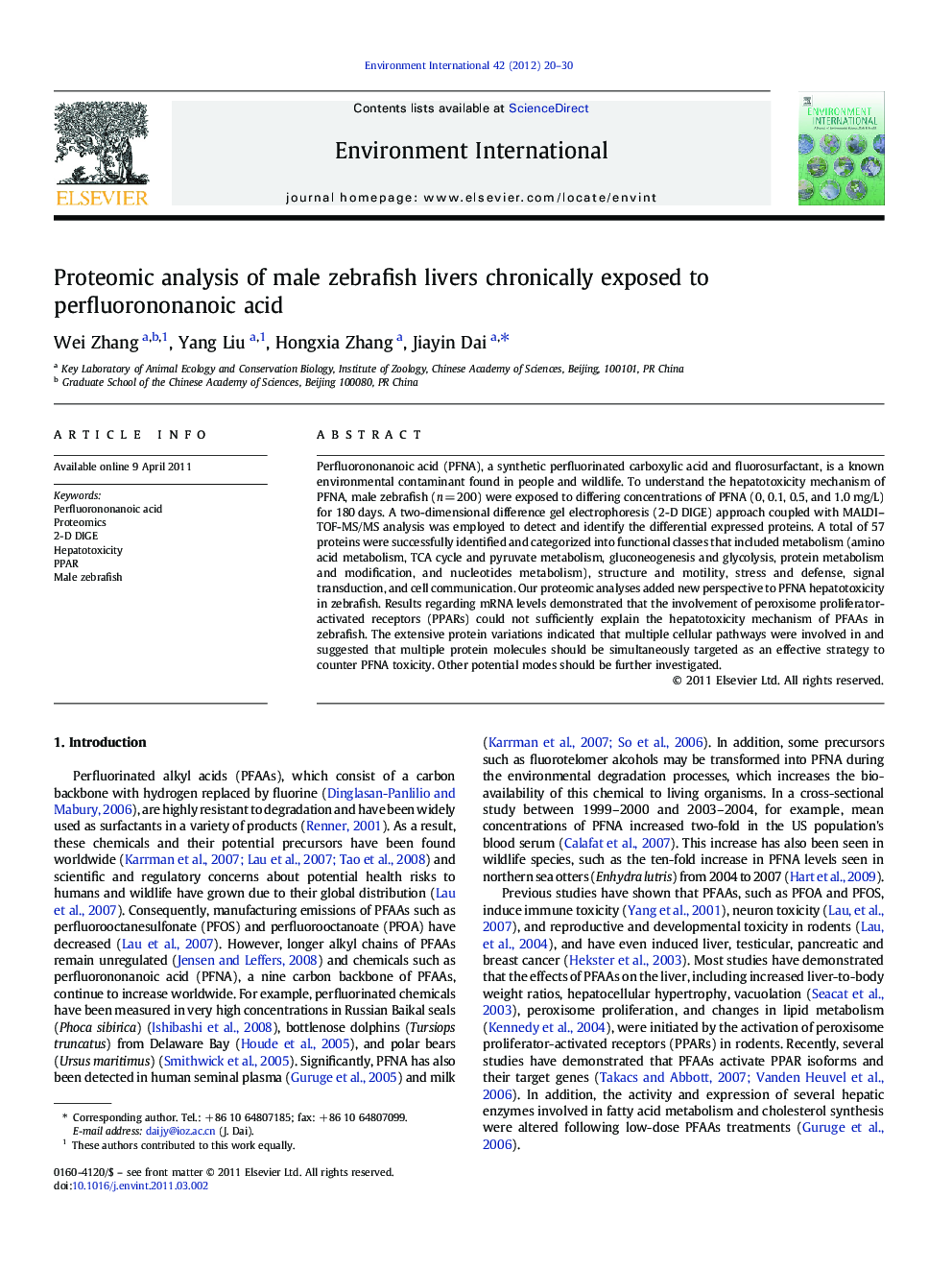| کد مقاله | کد نشریه | سال انتشار | مقاله انگلیسی | نسخه تمام متن |
|---|---|---|---|---|
| 4422961 | 1619085 | 2012 | 11 صفحه PDF | دانلود رایگان |

Perfluorononanoic acid (PFNA), a synthetic perfluorinated carboxylic acid and fluorosurfactant, is a known environmental contaminant found in people and wildlife. To understand the hepatotoxicity mechanism of PFNA, male zebrafish (n = 200) were exposed to differing concentrations of PFNA (0, 0.1, 0.5, and 1.0 mg/L) for 180 days. A two-dimensional difference gel electrophoresis (2-D DIGE) approach coupled with MALDI–TOF-MS/MS analysis was employed to detect and identify the differential expressed proteins. A total of 57 proteins were successfully identified and categorized into functional classes that included metabolism (amino acid metabolism, TCA cycle and pyruvate metabolism, gluconeogenesis and glycolysis, protein metabolism and modification, and nucleotides metabolism), structure and motility, stress and defense, signal transduction, and cell communication. Our proteomic analyses added new perspective to PFNA hepatotoxicity in zebrafish. Results regarding mRNA levels demonstrated that the involvement of peroxisome proliferator-activated receptors (PPARs) could not sufficiently explain the hepatotoxicity mechanism of PFAAs in zebrafish. The extensive protein variations indicated that multiple cellular pathways were involved in and suggested that multiple protein molecules should be simultaneously targeted as an effective strategy to counter PFNA toxicity. Other potential modes should be further investigated.
Journal: Environment International - Volume 42, July 2012, Pages 20–30